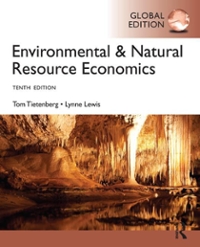tion level of the gamble in each graph? d. Suppose I offer you $x to not face this gamble. Illustrate in each of your graphs where x would lie if it makes you just indifferent between taking x and staying to face the gamble. e. Suppose I come to offer you some insurance; for every dollar you agree to give me if outcome A happens, I will agree to give you y dollars if outcome B happens. What's y if the deal I am offering you does not change the expected value of consumption for you? f. What changes in your three graphs if you buy insurance of this kind, and how does it impact your expected consumption level on the horizontal axis and the expected utility of the remaining gamble on the vertical? B. Suppose we can use the function u(x) = x" for the consumption/utility relationship that allows us to represent your indifference curves over risky outcomes using an expected utility function. Assume the rest of the set-up as described in A. a. What value can a take if you are risk averse? What if you are risk neutral? What if you are risk loving? b. Write down the equations for the expected consumption level as well as the expected utility from the gamble. Which one depends on a and why? c. What's the equation for the utility of the expected consumption level? d. Consider x as defined in A(d). What equation would you have to solve to find x? e. Suppose a = 1. Solve for x and explain your result intuitively. f. Suppose that, instead of two outcomes, there are actually three possible outcomes: A, B, and C, with associated consumption levels X1, X2, and x3 occurring with probabilities 81, 82, and (1 - 81 - 82). How would you write the expected utility of this gamble? g. Suppose that u took the form 2.5 u(x) = 0.1x0.5 X (17.36) 100,000 This is the equation that was used to arrive at most of the graphs in part A of the chapter, where x is expressed in thousands but plugged into the equation as its full value; i.e., consumption of 200 in a graph represents x = 200,000. Verify the numbers in Graphs 17.1 and 17.3. (Note that the numbers in the graphs are rounded.)







